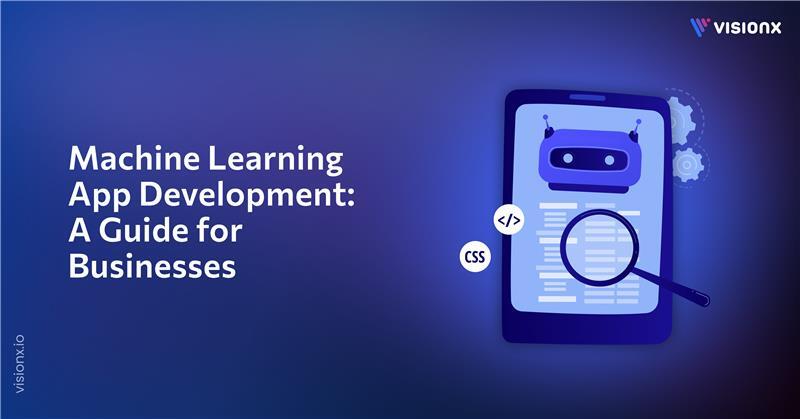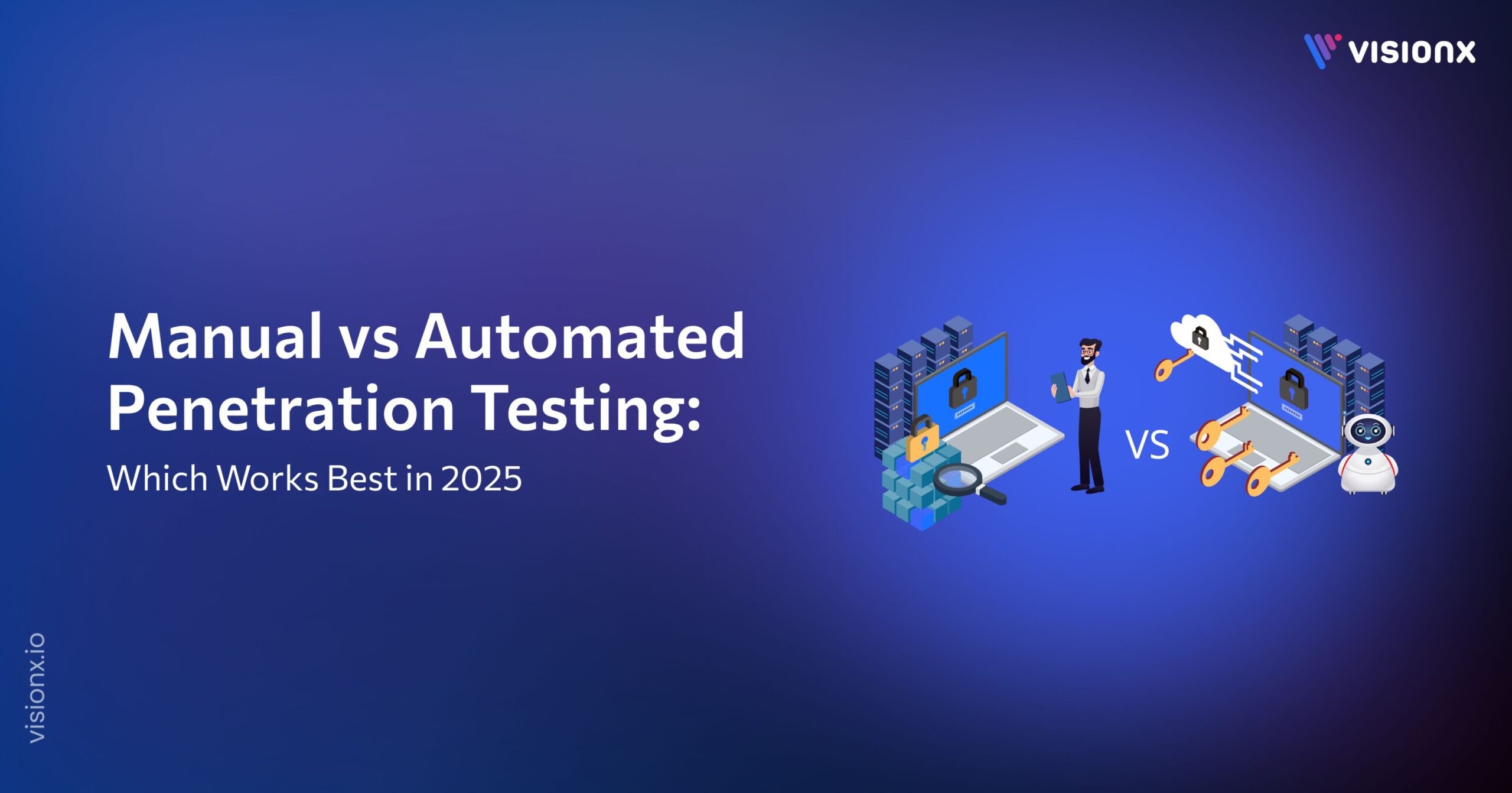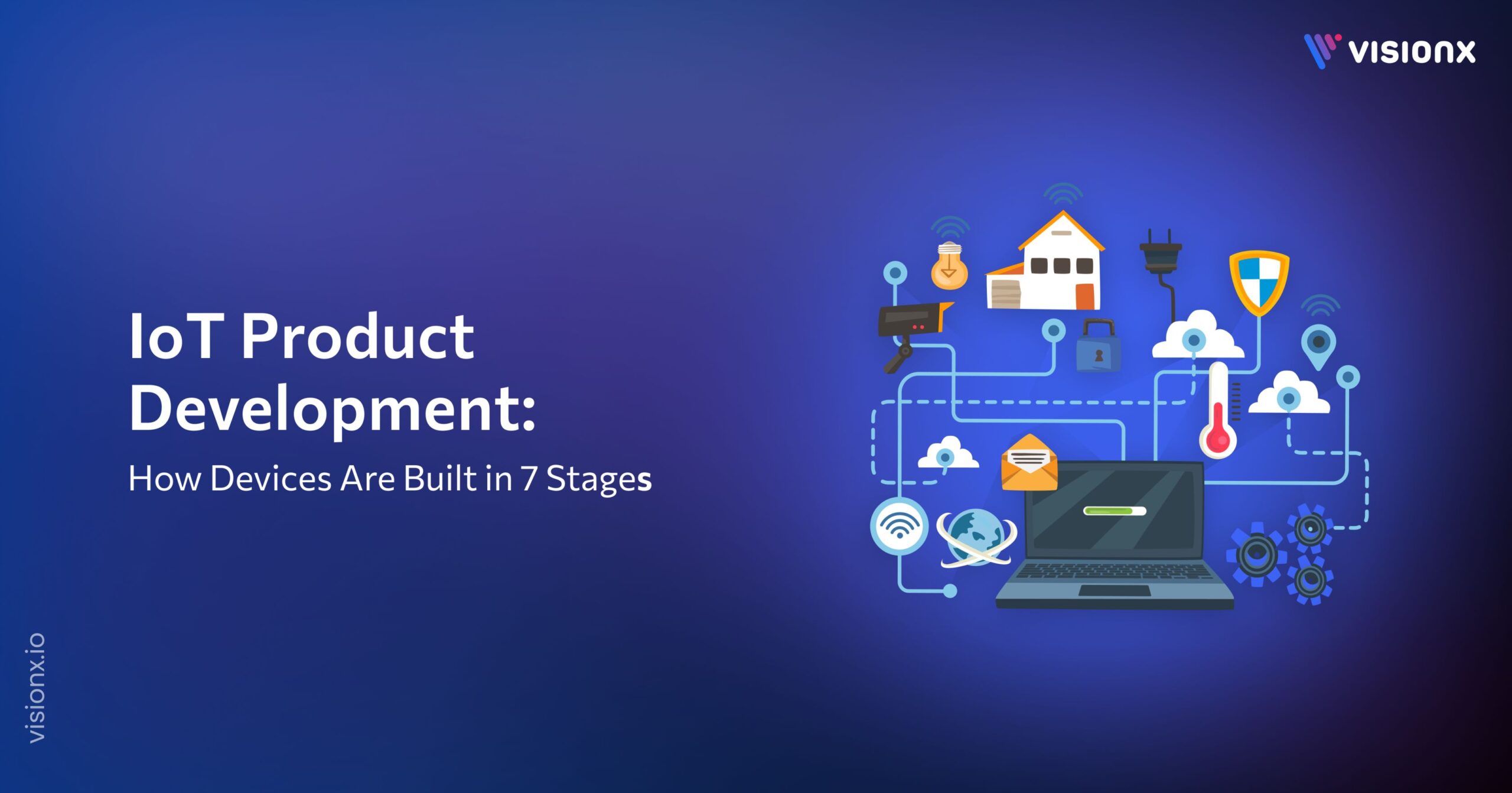Machine learning app development has the potential to help your business. It promises smarter decisions and new ways to work. But the path from a good idea to a functional app feels a bit too complex. Like, where do you even start? A recent McKinsey survey found that only 15% of companies have successfully scaled AI capabilities beyond pilot programs.
This is a problem that many businesses encounter. They do see the potential but get lost in the technical details. This guide will help you avoid that. We will walk you through the key steps to build a machine learning app for your business. We will also focus on a practical approach, from your initial idea to a functional product. The goal is to give you a clear roadmap so you know what to expect.
What is Machine Learning App Development?
Machine learning app development is a process of building an application that uses machine learning algorithms that learns from previous data or trends to make decisions or predictions. It usually offers sophisticated features like automation, data-driven insights, and personalized recommendations.
It is different from standard software. A traditional app follows explicit rules written by a developer. If this, then that. The logic is fixed and predictable.
A machine learning application operates differently. Developers do not code the rules. Instead, they build ML models that learns from data. They feed it training data with historical examples. The system finds patterns and relationships within that data. It builds its own internal logic. The app then uses this learned ML model to make decisions on new, unseen data.
Consider it this way. You would not try to code every rule to identify a cat in a picture. The task is too complex. Instead, you show a model thousands of pictures of cats and non-cats. The ML model learns the patterns that define “cat-ness.” Then, it can identify cats in new pictures on its own.
The machine learning app development process shifts from writing business logic to managing three core components:
- The data used for training.
- The model that learns from the data.
- The application that delivers the model’s intelligence to a user.
Why Should Businesses Invest in Machine Learning Apps?
Businesses invest in machine learning app development for a simple reason. It solves problems that traditional software cannot. Standard apps automate tasks you already understand. Machine learning apps find answers in data. They predict what comes next or find patterns too complex for a person to see.
This ability leads to clear business advantages.
- You make better decisions. Machine learning applications turn guesses into forecasts by analyzing large datasets to predict demand, spot market shifts, or assess risk.
- You automate complex work. Tasks needing judgment, like reviewing legal documents or detecting fraud, can be handled at scale and speed.
- You personalize user experiences. ML apps recommend products, surface content, and tailor services to individual needs, building stronger customer ties.
- You increase efficiencies. They forecast machine failures, optimize routes, and manage energy use, cutting costs and preventing issues.
Recent research shows that every $1 spent on AI is projected to yield $4–5 in economic returns, underscoring the strong value proposition behind investing in ML solutions.
How Do You Create a Machine Learning App in 5 Steps?
A precise plan is necessary while developing a machine learning application. This machine learning app development process focuses on the core tasks that lead to a working application. These five steps cover the essential journey from machine learning app ideas to operation, helping teams understand how to create machine learning solutions that scale.
Step 1: Pinpoint the Problem and Data
First, define a single business problem. Make it specific and measurable. A good problem has a clear goal, like “reduce customer churn by 10%.” At this step, you do not have to worry about the technology yet. Next, find the data that relates to that problem. Look at what your business already collects. Check if you have enough historical information. Then, prepare that data. This means cleaning errors, filling gaps, and organizing it all. This foundation determines everything that follows.
Step 2: Build and Test the Model
Use your prepared data to teach a machine learning model. This step involves several key tasks.
- You will select an existing machine learning algorithm suited to your task.
- You can then train the model by feeding your clean training data so that it may learn and improve patterns.
- You will execute it on new data to check its correctness and performance in actual situations.
- This important test tells you whether the model is functioning or whether more work is needed. In some cases, an ML development team is required to build ML models that can scale.
Step 3: Integrate into an Application
A model by itself is just a file. You have to put it into an app that people can use. Build a simple application with a user experience in mind. Create an API that acts as a bridge between the app and your model. This API sends user behavior data to the model and returns a prediction. The user sees a simple button or form, not the complex work behind it. The app makes the model’s power accessible and practical, showing how to integrate an ML model into your app.
For a better understanding of AI integration into an app, you can also read How to Integrate AI into an App: 7 Easy Steps in 2025.
Step 4: Deploy for Real Users
Launch your application for people to use. This involves key technical actions.
- You will move the app from a test environment to a live server.
- Then ensure the server is secure and can handle user traffic.
- And plan for scalability to manage growth in users.
Budget plays an important role at this stage. If you want a clearer picture of potential expenses, here’s a detailed guide on the cost to develop an app that can help with planning.
This step makes your project real and puts it to work for your business.
Step 5: Monitor and Update
Your work continues after launch. Models can decay over time. New data can make old patterns less accurate. This is called model drift. You must watch the app’s performance. Track the accuracy of its predictions. Set up alerts for when performance drops. When it does, retrain the model with new data. This final step is not optional. It ensures your app continues to deliver value and does not become obsolete.
How Can You Integrate an ML Model into Your App?
A trained machine learning model is not an application. It is a file with learned patterns. To make it useful, you must put it into a system that people can use. This process is part of machine learning app development, often referred to as integrating an ML model into your app.
Think of the model as an engine. A car engine is powerful, but it is useless without a chassis, wheels, and a steering wheel. Integration builds the car around the engine.
Here is how you do it.
First, you choose a deployment method. You have two main paths.
- The first path is to host the model on a server. You create an API, which is a web address that can receive data and return a prediction. Your mobile app or website sends data to this API and gets a result back. This is a common method in machine learning app development. It lets you update the model without changing the app on a user’s phone.
- The second path is to embed the model directly on a device. The model lives on the user’s smartphone or sensor. This is called edge deployment. It works faster for real-time tasks because it does not need an internet connection. But it is less flexible. To update the model, you must update the entire app.
Next, you build the connection. If you choose the server path, you build an API. Your ML development team writes code to handle requests. The API does a specific job. It receives data from your app, passes it to the model, and then sends the model’s prediction back.
Your main application code calls this API. For example, when a user loads a screen, the app might send their user ID to the prediction API. The API returns a list of recommended products. The app then displays those products.
Finally, you design the user experience. The user should never know about the model. They interact with a normal app. The machine learning works in the background.
A good interface focuses on the outcome. If the model predicts a customer is likely to churn, the app might show a special offer using dynamic pricing. The user sees the offer, not the prediction. The complexity stays hidden, which reflects the strength of machine learning app development in building business-ready solutions.
Popular Machine Learning App Ideas for 2025
Machine learning app development continues to reshape industries by solving real problems. Here are some practical machine learning app ideas gaining traction for the coming year.
Personalized Health Monitors
Wearables and apps now track basic metrics like steps or heart rate. The next step is predictive personal health. An app could analyze sleep patterns, activity levels, and nutrition to warn users of potential health issues before they become serious. It would offer tailored suggestions based on individual data.
Smart Inventory Management
Retailers frequently end up with stockouts or overstock. Smart inventory management powered by a machine learning application can forecast demand changes because of trends, seasons, or local events. A small business’s app could automate reordering, minimize waste, and increase sales without having to guess.
AI-Assisted Content Creation
Content creators need to continually generate new content. Artificial intelligence and machine learning algorithms now support tools that can assist in writing outlines, suggest images, or tone down to appeal to the audience’s tastes. These apps are co-creation tools, but not substitutes for creativity.
Predictive Maintenance Platforms
Equipment failure disrupts operations and costs businesses time and money. Predictive maintenance apps use sensors combined with building your ML model to detect subtle changes in sound, vibration, or performance that hint at future breakdowns. An app could alert technicians to service machinery before it fails.
Custom Learning Pathways
Education often follows a one-size-fits-all approach. Adaptive learning apps can assess a student’s strengths and weaknesses in real time, adjusting lessons to fit their pace and style. This makes learning more efficient and less frustrating, which represents how machine learning app development supports tailored user experience in education.
How Do You Choose the Right Machine Learning App Development Company?
You need a partner to build your machine learning app development project. The right machine learning app development company will understand your goals. The wrong one will waste your time and money. Your choice is critical. Here is how you make it.
- Seek out a firm with proven machine learning expertise and not generalized software.
- Request concrete case studies and client references that relate to your industry or similar machine learning app ideas.
- Make sure they have data scientists and ML engineers who know how to create machine learning solutions, and not only mobile app developers.
- Select a partner who asks extremely penetrating questions about your business issue and data.
- Verify if they possess a well-defined process to integrate an ML model into your app for the maintenance and updates of the model after deployment.
- Check their communication style and if it is in line with what you like to work with.
- Compare prices openly and know what you are paying for it.
Factors Affecting ML App Development Cost and Time with Ways to Reduce
The cost and timeline of machine learning app development depend on a mix of technical, business, and resource-related factors. Here are the main ones:
Factors Affecting Cost and Time
- Complexity of the App
Simple ML apps with limited features cost less and take less time. Complex apps with deep learning, NLP, or computer vision require extensive data and fine-tuning, which raises both cost and development time. - Type of Machine Learning Model
Pre-trained models save time and money, while custom models demand data collection, labeling, and optimization, making them more expensive and time-consuming. These steps increase both cost and development time when you build ML models from scratch. - Data Availability and Quality
If clean, labeled data is already available, the process is faster. Collecting and preparing new datasets adds significant cost and delays in ML development. - Development Team and Expertise
A specialized machine learning app development company can deliver high-quality results faster but at a higher cost, while freelancers may be cheaper but take longer.
Cost and Timeline of Machine Learning App Development
| App Type | Examples | Estimated Timeline | Estimated Cost |
| Simple ML App | Sentiment analysis, basic recommendation engine, chatbot with predefined responses | 3–4 months | $30,000 – $60,000 |
| Moderate ML App | Image recognition, personalized shopping assistant, predictive analytics for sales | 5–7 months | $70,000 – $120,000 |
| Complex ML App | Healthcare diagnostic system, fraud detection with real-time learning, NLP-powered virtual assistant | 9–12+ months | $150,000 – $300,000+ |
How to Reduce Cost and Speed Up ML App Development
- Make use of pre-trained models: Don’t start from scratch when you can integrate an ML model into your app quickly.
- Take Advantage of Cloud ML Services: Use AWS, Google Cloud, or Azure.
- Adopt MLOps Automation: Automate the model lifecycle and updates.
- Begin small, and build on it: Start with an MVP, test it, then expand as you refine your machine learning app ideas.
Why VisionX Stands Out in Machine Learning App Development
VisionX brings together specialized knowledge of machine learning development with proven success in creating scalable intelligent solutions. We stand apart from generic app development providers because we unite data scientists with ML engineers and software developers to create applications that merge advanced technical features with excellent user experiences.
VisionX enables businesses to implement ML models in their applications while creating complete AI solutions that match their distinct operational requirements.
A few things we do differently:
- Our team operates at a high speed because we use agile sprints and iterative development, which produces functional prototypes fast to test concepts while minimizing potential risks.
- We build apps for people. Our designs focus on providing value through user-friendly, intuitive interfaces instead of using technology as a display feature.
With VisionX, businesses gain a strategic partner committed to driving innovation, efficiency, and long-term growth through machine learning.
FAQs
What is machine learning?
Machine learning is a method that lets software applications learn from data and improve without direct programming. Instead of following fixed rules, the app uses patterns it finds in data to make decisions or predictions.
How can I create an app using machine learning?
Begin with a well-defined business problem. Collect and organize your data that is pertinent to your work. Train a model appropriate for your work. Deploy the model in an application through an API. Deploy the application live and intend to monitor and improve the model on an ongoing basis.
Can I learn ML in 3 months?
You can acquire the fundamentals in three months. Practice the core things like data preparation, model training, and testing. Developing a complete app also needs knowledge of system integration and software development.
What language is ideal for machine learning app development?
Python is utilized for app training and building due to its extensive libraries. To implement apps, languages like JavaScript (for web applications), Swift (for iOS), or Kotlin (for Android) are usually implemented with the utilization of Python-based APIs.


